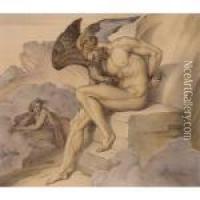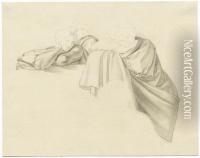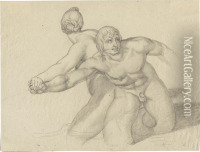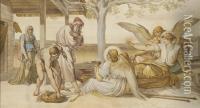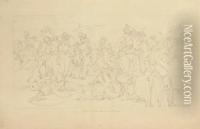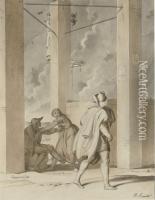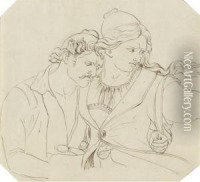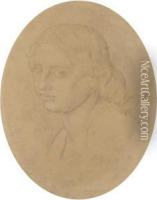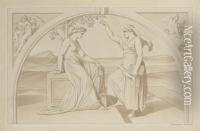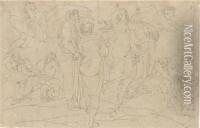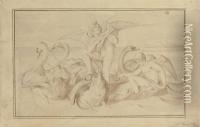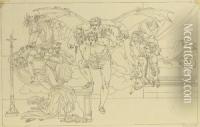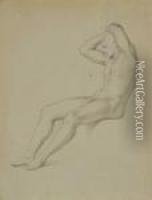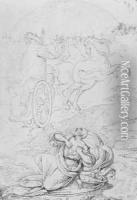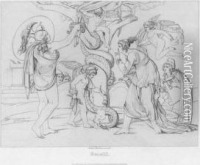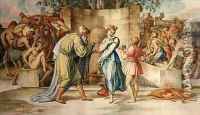Bonaventura Genelli Paintings
Bonaventura Genelli was a German painter and illustrator born on September 28, 1798, in Berlin. He was known for his distinctive style, which was influenced by the Neoclassicism and the Nazarene movement. Despite being born in Germany, Genelli's Italian roots—his father was a painter from Rome—had a profound influence on his artistic development.
Genelli received his early training from his father, Janus Genelli, before moving on to study under the classicist painter Karl Wilhelm Wach. His early works were often historical scenes, and he gradually developed a predilection for mythological subjects, which would become a hallmark of his career.
In the 1820s, Genelli moved to Munich, which was then a vibrant center of artistic activity. There, he became associated with the Nazarenes, a group of artists who aimed to revive the spirituality and sincerity of medieval and early Renaissance art. However, Genelli's approach was more secular and focused on the heroic and the dramatic. His work was characterized by clear outlines, careful composition, and a use of color that was often described as vivid and expressive.
Despite his talent, Genelli struggled with financial difficulties throughout his life. He worked as an illustrator to make ends meet, creating designs for several publications. He also received commissions for frescoes, which are among his most notable contributions to the art world. His frescoes are found in various locations, including the Villa Massimo in Rome.
Genelli never married and led a life marked by poverty. He was somewhat isolated from the mainstream art world, and his work was often underappreciated during his lifetime. Nevertheless, he had a circle of devoted pupils and admirers who regarded him as a master of mythological painting.
Bonaventura Genelli died on November 13, 1868, in Rome. Posthumously, his work gained greater recognition, and he is now considered an important figure in the German art world of the 19th century, particularly for his contributions to the Neoclassical movement and his unique interpretation of mythological themes.
